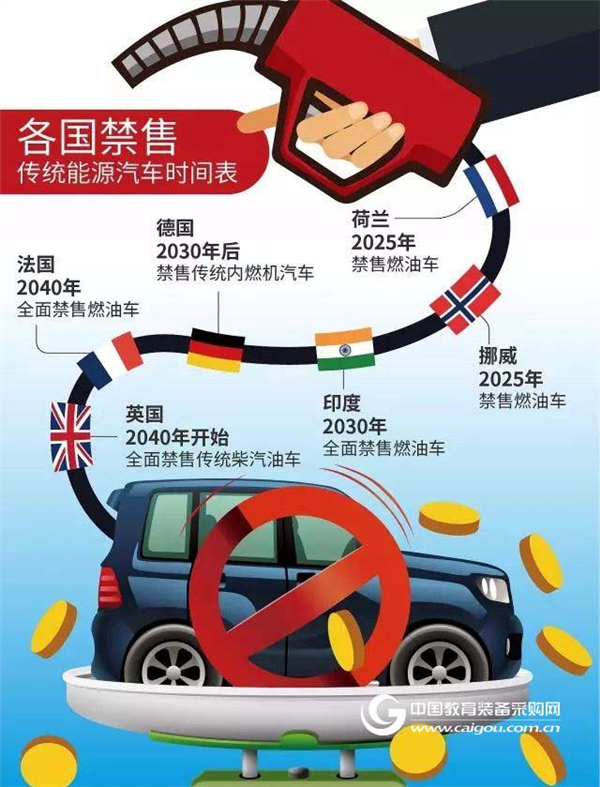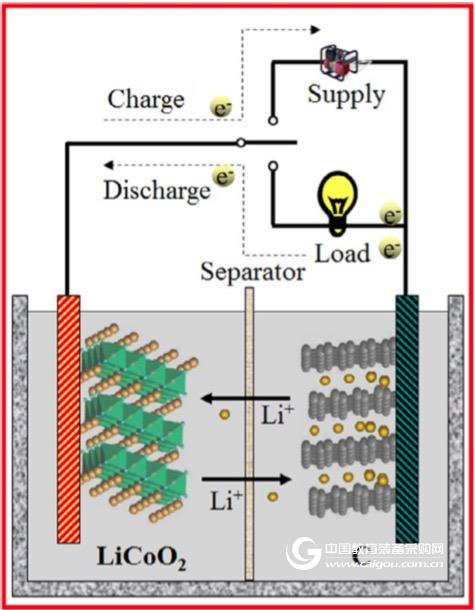Foreword
As global energy and environmental issues continue to emerge, the development of new energy vehicles has become the consensus of all countries in the world. Many countries in Europe have set a timetable for the restriction of fuel vehicles. At the same time, according to People’s Daily News, China’s Ministry of Industry and Information Technology has indicated that China has initiated research traditions. The exit schedule of fuel vehicles, this news makes the new energy vehicle and lithium battery industry stand on the cusp of capital, then the lithium battery industry, which is an important aspect of new energy vehicles, will present a wider application potential. So today Xiaobian will briefly introduce the basic principle of Li battery and its composition of positive and negative materials.

First, lithium battery overview
First, let's introduce the concept of a lithium battery. A "lithium battery" is a type of battery using a lithium metal or a lithium alloy as a negative electrode material and using a nonaqueous electrolyte solution. Lithium batteries can be roughly divided into two categories: lithium metal batteries and lithium ion batteries. Among them, lithium metal batteries were first proposed and studied by Gilbert N. Lewis in 1912. In the 1970s, MSWhittingham first used titanium sulfide as the positive electrode material and lithium metal as the negative electrode material to make the first lithium metal battery. However, due to the very active chemical properties of lithium metal, the processing, storage and use of lithium metal are very demanding on the environment, and its safety hazards have attracted much attention. Therefore, lithium metal batteries have not been used for a long time. In 1982, RRAgarwal and JRselman of the Illinois Institute of Technology discovered that lithium ions have the characteristics of embedded graphite. This process is fast and reversible, so attempts have been made to fabricate rechargeable batteries using the characteristics of lithium ion-embedded graphite. In 1991, Sony released the first commercial lithium-ion battery, and lithium-ion batteries revolutionized the face of consumer electronics. Habitually, people also call lithium-ion batteries lithium batteries, but these two batteries are not the same. With the development of cathode materials for lithium-ion batteries, various types of lithium-ion batteries have been developed. Lithium-ion batteries have high voltage, high capacitance, low consumption, no memory effect, no pollution, small size, and small internal resistance. The self-discharge small cycle has many times and is widely used in civil military equipment such as mobile electronic devices.
Second, the working principle of lithium battery
Lithium metal battery:
A lithium metal battery is generally a battery using manganese dioxide as a positive electrode material, metallic lithium or an alloy metal thereof as a negative electrode material, and a nonaqueous electrolyte solution.
Discharge reaction:
Li+MnO2=LiMnO2
Lithium Ion Battery:
A lithium ion battery is generally a battery using a lithium alloy metal oxide as a positive electrode material, graphite as a negative electrode material, and a nonaqueous electrolyte. A schematic of a lithium ion battery is shown in Figure 1.

Figure 1. Schematic diagram of a lithium ion battery
Take LiCoO2 as an example
The reaction that occurs on the charged positive electrode is
LiCoO2=Li(1-x)CoO2+XLi+Xe-
The reaction occurring on the charging negative electrode is
6C+XLi+ Xe-=LixC6
Rechargeable battery total reaction
LiCoO2+6C=Li(1-x)CoO2+LixC6
Third, Li battery cathode material
There are many cathode materials generally available, such as lithium cobaltate, lithium manganate, lithium iron phosphate, lithium nickelate, ternary, lithium-rich phase, lithium iron silicate, lithium manganese phosphate, and lithium iron sulphate. Different cathode materials correspond to different average output voltages at energy density:
Cathode Material Average Output Voltage Energy Density LiCoO2 3.7 V 140 mAh/g Li2MnO3 3.7 V 100 mAh/g LiFePO4 3.2 V 130 mAh/gFourth, lithium ion battery anode material
The first one is a carbon negative electrode material: the negative electrode materials actually used for lithium ion batteries are basically carbon materials, such as artificial graphite, natural graphite, mesophase carbon microspheres, petroleum coke, carbon fiber, pyrolysis resin carbon, and the like.
The second type is a tin-based anode material: the tin-based anode material can be classified into two types: tin oxide and tin-based composite oxide. Oxide refers to oxides of various valence metal tins. There are no commercial products.
The third is a lithium-containing transition metal nitride anode material, which is not commercially available.
The fourth type is an alloy-based anode material: including tin-based alloys, silicon-based alloys, bismuth-based alloys, aluminum-based alloys, bismuth-based alloys, magnesium-based alloys, and other alloys, and no commercial products.
The fifth type is a nano-scale anode material: carbon nanotubes, nano-alloy materials.
The sixth nanomaterial is nano-oxide material: According to the latest development of the market of lithium battery new energy industry in 2009, many companies have begun to use nano-titanium oxide and nano-silica to add to the traditional graphite, tin oxide, nano-nano. Inside the carbon tube, the charge and discharge amount and the number of charge and discharge times of the lithium battery are greatly improved.
Six, postscript
I have already introduced the basic principle and positive and negative materials of the most widely used Li-ion battery, which gives us a basic understanding of lithium-ion batteries. In electron microscopy, how is Li-ion battery What about characterization? The next issue will be brought to you to understand, so stay tuned.
What's the exciting content in the next issue? Stay tuned!
Bookrack,Bookshelf Setup,Student Bookshelf Labels,Library Bookshelf,Children ​Corner Metal Book Shelf
AU-PINY FURNITURE CO., LTD , https://www.jmaupiny.com
